Full moon rituals have been hyped as cosmic therapy, but let’s be honest: most people light candles and still feel restless.
After watching this pattern play out with clients again and again, I noticed something important: rituals don’t work unless you do.
One woman I’ll tell you about later kept every release list taped above her bed.
Still, she couldn’t sleep through a single bright moon.
The moon is a spotlight, not a magic wand.
It shines so you finally see the clutter inside.
That’s why these rituals are less about mysticism and more about momentum.
And yes, this connects back to the core principles of manifesting change.
Top Takeaways
- Release isn’t automatic — tearing paper won’t heal you, action does the real work.
- One ritual beats many — 20 minutes of moon water or journaling is more powerful than seven hours of ceremony.
- Drama multiplies under moonlight — impulsive texts or big launches backfire harder when the full moon magnifies your energy.
- My personal take — Jon’s kettle showed me rituals aren’t about props but anchors: citrus steam sticks longer than any crystal grid.
- Consistency wins over magic — a one-page ritual you’ll actually repeat monthly builds more clarity than complex, one-off ceremonies.
The Twist: Rituals Don’t Release, You Do
“The wound is the place where the Light enters you.” Rumi wasn’t talking about moon baths, but he might as well have been.
Full moon rituals work by focusing attention and emotion, helping you decide and act on what to release.
It’s the deciding part that matters.
Burning a slip of paper won’t fix your ex texting you at midnight.
But deciding to stop answering will.
Sacred baths are soothing, sure.
But if you get out of the tub and repeat the same fight tomorrow, the water wasn’t magic, it was warm.
Are full moon rituals real or placebo? They reduce anxiety and increase perceived control.
That “placebo” is how your nervous system resets.
For years, I thought rituals themselves were the answer.
Now I see they’re the rehearsal.
The release happens when you step back into the room and act.
Key Takeaway: Rituals don’t erase problems; they prime your nervous system to make new choices with old emotions.
Tip: Write down one action you’ll take within 24 hours of the ritual.
That action turns the symbol into movement.
What To Do on a Full Moon (That Actually Helps)
Choose one release ritual and one integration ritual, keeping both under 20 minutes.
Here’s the part people overcomplicate.
Spiritual full moon practices aren’t about seven-hour ceremonies; they’re about clarity.
- Moon water: pour a glass, set it on the sill, drink it in the morning.
- Full moon journal: write what you’re done carrying, then shred or burn the page.
- Cleansing bath: add salt or herbs for a purification bath that actually calms your nervous system.
- Charge crystals under full moon: quartz, selenite, moonstone. Put them in the window and let them soak.
- Breath drop: two minutes of exhale-focused breathing before bed.
Do I need to see the moon? No.
Window light or intention indoors is just as valid.
I’ve told clients in high-rise apartments the same: rituals live in meaning, not skyline views.
Key Takeaway: Simple beats fancy.
One release and one gentle integration practice are enough.
Tip: Time-box to 20 minutes, then block a small next step on your calendar to carry the energy forward.
What Not To Do Tonight
Avoid high-stakes confrontations, impulsive commitments, and starting brand-new projects during the full moon.
Here’s the trap: the full moon amplifies whatever you’re already carrying.
If you’re calm, you’ll feel clearer.
If you’re overloaded, you’ll feel like a shaken soda can.
Common “don’ts” people overlook:
- Firing off 2AM texts you’ll regret.
- Over-scheduling social events.
- Buying “just one more” crystal set online.
- Launching something brand new instead of closing old loops.
Is hair-cutting okay? Symbolically yes, it’s more about meaning than superstition.
When the moon is full, less is more.
Restraint is the ritual.
And if you’re tempted to “clear the slate” with drama, it’s wiser to focus on ways to remove bad luck quietly instead.
Key Takeaway: The full moon amplifies whatever’s present.
Skip impulsive choices and avoid high-drama actions to protect your energy.
Tip: Drop one stimulus, screens, mirrors, or group chat, for two hours tonight to calm your nervous system before sleep.
Manifesting at the Full Moon (Without Magical Thinking)
Full moons are best for clarifying and recommitting, not for starting fresh intentions.
This is where beginners get confused.
Some sources say manifest during a full moon; others swear it’s only for release.
The truth?
You can do both if you understand timing.
Traditionally, new moons spark intentions.
Full moons refine them.
Think of it as editing a draft, not starting a novel.
Write one line of release, “I let go of …”.
Write one line of recommitment, “I choose …”.
And write one action for tomorrow morning.
It’s practical, not mystical.
Expect lighter sleep, so plan for a slower start the next day.
And if you need a reset, practice how to set intentions clearly so the ritual doesn’t spiral into wishful thinking.
For more inspiration, check out this trusted list of best full moon rituals.
Key Takeaway: The full moon spotlights what’s ready for editing, not initiation.
Recommit and release instead of starting something brand new.
Tip: Write two simple lines tonight, one release and one recommitment, and put them where you’ll see them at breakfast.
Mara, 38: The Balcony Ritual That Finally Let Him Go
A two-step ritual plus a next-day action created the closure she’d been chasing for months.
Mara lit rosemary in a chipped mug on her balcony while the city hummed below.
The railing was cold against her palms.
She wrote a line, folded the page, and dropped it into a bowl of water.
The contrast?
Quiet ceremony at midnight, hard phone call at lunch.
That next-day call was the release, not the paper.
Three things made it work:
- She kept the container small.
- She paired symbol with behavior.
- She acted within 24 hours.
Key Takeaway: Symbols only move energy when paired with action.
Mara’s ritual worked because she followed it with a boundary.
Tip: Before your ritual, pre-decide one call, boundary, or email to make the next day.
Moonlight Isn’t Magic, It’s a Mirror
Across cultures, the moon has marked meaning more than it has made change.
Think of Stonehenge gatherings, where thousands wait for the alignment that simply confirms what they already believed.
Or the film Moonlight, which wasn’t about lunar power; it was about identity revealed under pressure.
Moonlight doesn’t change you.
It reflects you, sharp enough to finally admit what’s been waiting inside.
Key Takeaway: Treat the full moon as a mirror.
It reveals what’s already ready to surface, not what appears out of nowhere.
Tip: Ask yourself, “What is this light showing me that I already know, but haven’t admitted yet?”
Sleep, Mood & the Full Moon: What Science Actually Says
Scientific studies show full moons may slightly affect sleep, but the effects are small and vary widely.
One study in Current Biology found people slept about 20 minutes less during the full moon.
Another found no effect at all.
The catch is expectation, if you believe the moon will mess with you, your brain often follows through.
I’ve had clients swear their mood flips under lunar light, only to realize it was really late-night scrolling that kept them wired.
“Lunar lunacy” makes for fun headlines, but better sleep hygiene is still the more reliable solution.
Sometimes the simplest way to hold steady is to trust the universe instead of scrolling until 3AM.
Key Takeaway: Full moons might shave a sliver off your sleep, but your habits have far more impact than lunar phases.
Tip: Plan for one compensator, an early dinner, a morning walk, or less screen time, to keep your mood steady tomorrow.
Jon, 29: The “No Altar, No Problem” Ten-Minute Reset
Even without a crystal grid, simple apartment rituals can reset your focus under a full moon.
Jon lived in a fifth-floor walk-up with a window ledge and a chipped kettle.
He boiled water, tossed in citrus peels, and let the steam fog the glass.
He pulled two tarot cards, “keep” and “let go”, and tucked a hoodie into a donation bag.
His ritual wasn’t fancy.
But the sensory anchors stuck, hiss of the kettle, smell of citrus, scratch of pen on paper.
Constraints made it real.
No altar, no robe, just clarity that carried into his morning commute.
Sometimes, it’s not about the tools but the meaning—though a simple water bottle with crystal inside can help anchor intention.
Key Takeaway: Meaning beats aesthetics.
Even tiny rituals can create emotional reset if you anchor them to your senses.
Tip: Pick one sensory anchor, scent, sound, or texture, to help your body remember what your mind decided.
Full Moon Rituals: Your Biggest Questions Answered
Full moon rituals are simple actions that focus energy, clarify choices, and provide closure.
- What rituals should be done on a full moon? Choose one release and one integration ritual you can repeat monthly.
- What not to do during a full moon? Avoid impulsive starts, high-drama talks, and choices you can’t easily undo.
- What are you supposed to do when you see a full moon? Pause, reflect, and name one thing you’re ready to release.
- How to manifest during the full moon? Use it to refine and recommit intentions, not to start something brand new.
Key Takeaway: The simplest answers are usually the strongest.
Moon rituals thrive on clarity, not complexity.
Tip: Write your one-line answer to each question before lighting a candle.
That way, the ritual stays grounded in choice.
A One-Page Ritual You’ll Actually Repeat
The simplest full moon ritual fits on one page and takes twenty minutes total.
Forget the elaborate checklists.
If your ritual isn’t repeatable, it won’t last.
Here’s the three-part flow I recommend:
- Prep (5 minutes): Grab water or tea, pen, timer, and a quiet corner.
- Practice (10 minutes): Two minutes of breathing, six minutes of writing, release and recommit, and two minutes of symbolic act: tear, salt, or steam.
- Plan (5 minutes): Schedule one action and design a gentler morning for yourself.
It’s easy, sustainable, and powerful precisely because it’s small.
Rituals stick when they don’t demand perfection.
And if you’re unsure where to start, revisit the ten steps to attract what you want most—rituals amplify what you’ve already clarified.
Key Takeaway: Repetition beats intensity.
A short, structured ritual builds consistency you can return to month after month.
Tip: Print this three-step checklist and tape it inside a cabinet so it’s waiting for you next full moon.
What the Full Moon Really Leaves Behind
Full moon rituals don’t fix your life; they focus your attention so you can.
The moon isn’t magic, it’s a monthly reminder to pause, release, and recommit.
Each ritual is really about protecting your own energy.
Think back to Mara’s balcony or Jon’s kettle, what mattered wasn’t rosemary smoke or citrus steam, but the actions they carried forward.
Treat each full moon as practice.
One small release, one recommitment, one next step.
That’s enough.
Next month, the light will come again, ready to shine on whatever you’ve grown brave enough to face.
And when you’re ready, deepen that release by manifesting by letting go.
Key Takeaway: Full moons are monthly clarity checkpoints.
Use them to edit, release, and recommit, not to wait for magic.
Tip: Text yourself one sentence tonight, “I release X; tomorrow I’ll do Y”, and pin it where you’ll see it in the morning.




